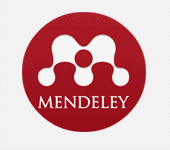The Effect of Clean and Healthy Lifestyle Education with Poster Media on the Level of Knowledge of Clean and Healthy Lifestyle and the Presence of Mosquito Flies in Geyer Village
Abstract
Education on Clean and Healthy Living Behavior is considered important as an effort to prevent diseases transmitted through mosquito larvae, especially in areas with low levels of health awareness. The purpose of this study was to analyze the effect of Clean and Healthy Living Behavior education using poster media on the level of community knowledge and the presence of mosquito larvae in Geyer Village. This research method uses a quantitative approach with a pre-test-post-test design. The research location was in Geyer Village. The research was conducted in January-June 2024. The study population included all heads of families in Geyer Village, totaling 2,086 heads of families. The sampling technique was accidental sampling. The sample in this study was 95 family heads. Data collection can be done by using questionnaires in the form of interviews and observations. Data were analyzed using paired t-test, namely Dependent T-Test or Wilcoxon test. The results showed that there was an effect of Clean and Healthy Living Behavior education with poster media on the level of knowledge about Clean and Healthy Living Behavior and the presence of larvae in Geyer Village (p-value=0.000). Education on Clean and Healthy Living Behavior using poster media is effective in increasing community knowledge and reducing the presence of larvae, which in turn can contribute to efforts to prevent mosquito-borne diseases. In addition, education through posters also contributed to a decrease in the presence of larvae in the neighborhood. It is recommended that the Clean and Healthy Living Behavior education program be carried out in a sustainable manner by utilizing various media for optimal impact.
Keywords: Hygiene and healthy lifestyle, Knowledge, Mosquito larvae
Full Text:
PDFReferences
Damayanti, A. Y. (2020). Perilaku hidup bersih dan sehat (PHBS) dan status gizi remaja di pondok pesantren. Darussalam Nutrition Journal, 4(2), 143. https://doi.org/10.21111/dnj.v4i2.4850
Harsono, H., Yulia Rosanti, S., & Aslinda Abu Seman, N. (2019). The Effectiveness of Posters as a Learning Media to Improve Student Learning Quality. The Journal of Social Sciences Research, 1(1), 97–103. https://doi.org/10.32861/jssr.54.1046.1052
Hendrawati, S., Rosidin, U., & Astiani, S. (2020). Perilaku Hidup Bersih Dan Sehat (PHBS) Siswa/siswi di Sekolah Menengah Pertama Negeri (SMPN). Jurnal Perawat Indonesia, 4(1), 295. https://doi.org/10.32584/jpi.v4i1.454
Hestiningsih, R. (2020). Pemberdayaan Masyarakat Dalam Program Pencegahan dan Penanganan Penyakit Demam Berdaran Dengue (DBD) Berbasis Keluarga di Desa Lebak Kecamatan Grobogan Kabupaten Grobogan. Seminar Nasional Kolaborasi Pengabdian Kepada Masyarakat UNDIP-UNNES 2019, 242–244.
Karim, D. S. P. (2018). Determinan Perilaku Hidup Bersih dan Sehat (PHBS) Tatanan Rumah Tangga. Jurnal Ilmu Kesehatan Masyarakat, 7(1), 1–9. https://doi.org/10.33221/jikm.v7i01.46
Kartika, Y., Pramestian, F., Masayu, N., Hasanah, F., Fera, F., & Arifin, R. (2021). Penerapan Pola Hidup Bersih Dan Sehat Untuk Meningkatkan Imunitas Tubuh di Desa Kalirancang, Alian, Kebumen. Jurnal ABDI: Media Pengabdian Kepada Masyarakat, 7(1), 78–87. https://doi.org/10.26740/ja.v7n1.p78-87
Kemenkes RI. (2018). Promosi Kesehatan dalam Bencana. Kementerian Kesehatan Direktorat Promosi Kesehatan Dan Pemberdayaan Masyarakat.
Kemenkes RI. (2020). Profil Kesehatan Indonesia 2019. Kemnterian Kesehatan RI.
Luqman, L., Sudaryo, M. K., & Suprayogi, A. (2022). Analisis Situasi Masalah Kesehatan Penyakit Menular di Provinsi Kalimantan Barat. Jurnal Epidemiologi Kesehatan Komunitas, 7(1), 357–374. https://doi.org/10.14710/jekk.v7i1.13269
Madeira, E., Yudiernawati, A., & Maemunah, N. (2019). Hubungan Perilaku Hidup Bersih dan Sehat (PHBS) Ibu dengan Cara Pencegahan Demam Berdarah Dengue. Nursing News, 4(1), 288–299. https://doi.org/10.33366/nn.v4i1.1549
Maharani, D. (2021). Hubungan Pengetahuan tentang Perilaku Hidup Bersih dan Sehat dengan Pola Hidup Sehat Usia Anak Sekolah di Masa Pandemi Covid-19. In Skripsi (p. 6).
Mahdalena, V., & Handayani, L. (2021). Efektivitas Music Video (MV) Terhadap Pengubahan Perilaku Siswa Paud Mengenai Perilaku Hidup Bersih Dan Sehat (PHBS). Ekspresi Dan Persepsi : Jurnal Ilmu Komunikasi, 4(2), 224–236. https://doi.org/10.33822/jep.v4i2.2979
Mufidah, N. A. N., Isyrofi, A. Q. A. Al, & Abdullah, S. A. (2024). Efektivitas Media Promosi Kesehatan Tentang Perilaku Hidup Bersih Dan Sehat (PHBS). Jurnal Ilmu Kesehatan Umum, 2(1), 160–172.
Natsir, M. F. (2019). Perilaku Hidup Bersih dan Sehat (PHBS) pada Tatanan Rumah Tangga Masyarakat Desa Parang Baddo. Jurnal Nasional Ilmu Kesehatan, 1(3), 54–59.
Newsom, L. C., Miller, S. W., & Chesson, M. (2021). Use of Digital vs Printed Posters for Teaching and Learning in Pharmacy Education. American Journal of Pharmaceutical Education, 85(6), 398–402. https://doi.org/10.5688/ajpe8307
Niruri, R., Rakhmawati, R., Saputri, R. N., & Farida, Y. (2023). Efektifitas Media untuk Peningkatan Pengetahuan dan Sikap pada Perilaku Hidup Bersih-Sehat Siswa Sekolah Dasar saat Adaptasi Kebiasaan Baru Era COVID-19. JPSCR: Journal of Pharmaceutical Science and Clinical Research, 8(3), 291–300. https://doi.org/10.20961/jpscr.v8i2.56862
Notoadmodjo. (2003). Ilmu Kesehatan Masyarakat. Jakarta: Rineka Cipta Medika.
Notoadmojo, S. (2018). Promosi Kesehatan, Teori dan Aplikasinya. CV. Rineka Cipta.
Notoatmodjo, S. (2014). Ilmu Prilaku Kesehatan. Rineka Cipta.
Perdana, F., & Sinaga, D. (2022). Pemanfaatan Poster Sebagai Media Edukasi Pola Hidup Bersih Dan Sehat (Phbs) Dalam Meningkatkan Literasi Informasi Ibu Di Masa Pandemi. Jurnal Kajian Budaya Dan Humaniora, 4(2), 209–214. https://doi.org/10.61296/jkbh.v4i2.15
Putra, R. D., & Herlina, L. (2020). Pengaruh Pendidikan Kesehatan Dengan Media Vidio dan Poster terhadap Pengetahuan dan Sikap PHBS pada Anak-Anak Panti Asuhan Aisyiyah Cempaka Baru Kemayoran Jakarta Pusat. 3(1), 30–52.
Sari, A. P., & Susilawati, S. (2022). Upaya meningkatkan derajat kesehatan melalui perilaku hidup bersih dan sehat di lingkungan masyarakat. FLORONA : Jurnal Ilmiah Kesehatan, 1(2), 47–52. https://doi.org/10.55904/florona.v1i2.315
Shin, S. J. (2012). Evaluation of electronic versus traditional format poster presentations. Medical Education, 46(5), 519–520. https://doi.org/10.1111/j.1365-2923.2012.04253.x
Syaputri, D., Manalu, S. M. H., Apsari, D. A., & Suprawihadi, R. (2023). The Influence of Clean and Healthy Living Behavior Education on Changes in Student Behavior. Contagion: Scientific Periodical Journal of Public Health and Coastal Health, 5(4), 1194. https://doi.org/10.30829/contagion.v5i4.17857
WHO. (2020). Comprehensive Guidelines for Prevention and Control of Dengue and Dengue Haemorrhagic Fever. Ganeva : World Health Organization.
DOI: http://dx.doi.org/10.30829/contagion.v6i2.19987
Refbacks
- There are currently no refbacks.
Copyright (c) 2024 Farah Fadhila, Adisty Rose Artistin

This work is licensed under a Creative Commons Attribution-ShareAlike 4.0 International License.






